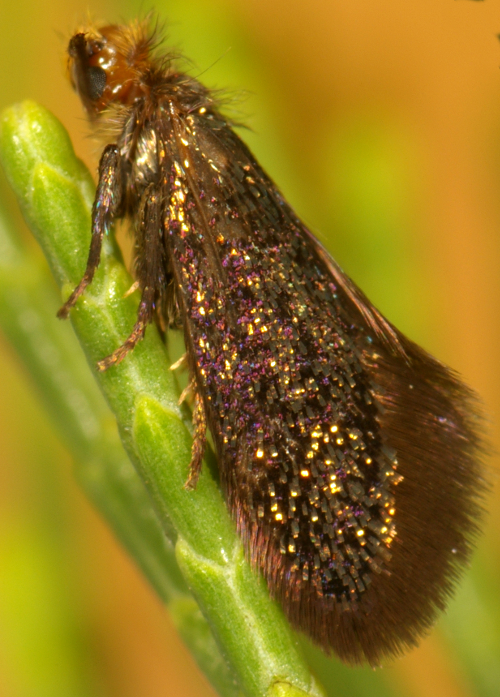New moth marks ancient journey

Aenigmatinea glatzella – the enigma moth - has iridescent gold and purple wings, and CSIRO experts have described it as a 'living dinosaur'.
The moth was unveiled as part of a launch of a foundation to support research into Australian moths and butterflies.
The enigma moth lives on Southern Cypress-pine trees (Callitris gracilis), a very ancient part of Australian flora that dates back to the supercontinent Gondwana.
With wings outstretched the adult moths are about the size of a five-cent piece. They are covered in scales that appear gold and purple, and the edges of their wings have feathery fringes.
The adult moths are short-lived. In just one day they emerge from their cocoons, mate, females lay their eggs, and then die.
Australia is thought to be home to about 22,000 species of moths and butterflies, of which about half have been named.
An international team of professional researchers and enthusiasts collected and described the moth, which has so far been found only on Kangaroo Island.
According to CSIRO's Dr Ted Edwards - who was jointly responsible for describing the new family by studying the moth's appearance and analysing its DNA - the team has revealed that the evolution of moths and butterflies is even more complex than previously thought.
While the discovery of this new moth strengthens the evolutionary relationships between other primitive moth families, it also suggests that tongues evolved in moths and butterflies more than once,” Dr Edwards, an Honorary Fellow with CSIRO's Australian National Insect Collection, said.
“Our fauna is so exciting we can still find new primitive species. Australia is so rich in moths that vast numbers still remain to be discovered.”
The paper describing the new family of primitive moths from Australia has been published here.








 Print
Print